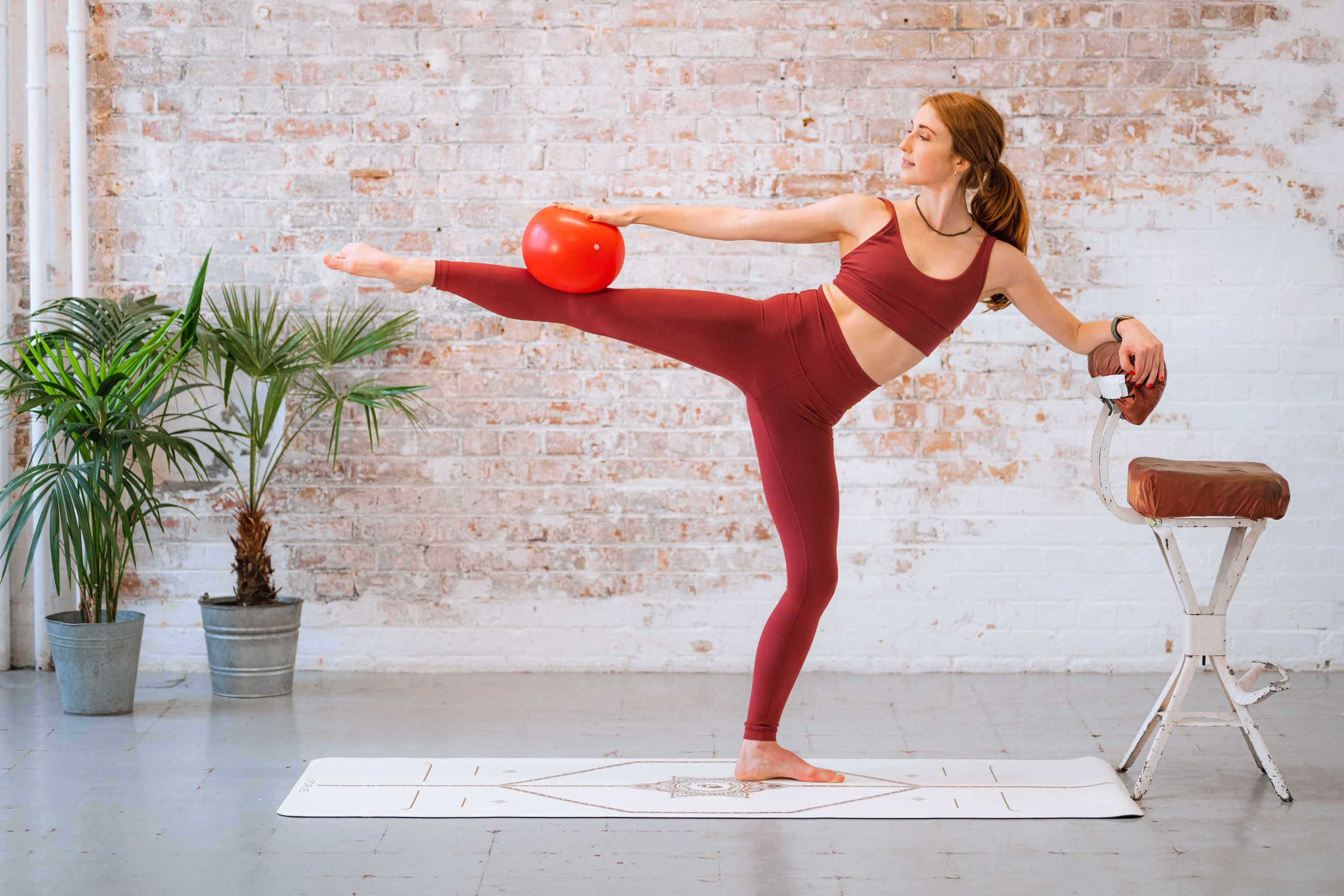Benefits of Barre
Barre is the ultimate workout if you’re looking for a high-energy, low-impact, and, most importantly, fun workout. Credited as a fusion of dance and pilates, barre is deceptively challenging, with multiple repetitions and pulses to achieve a deep burn. But, If you’re new to barre and wonder, “What are the Benefits of Barre”? Then you’re in the right place. I’m Bridget, founder of Kala Pilates, and I’ll take you through the main benefits you can expect from regular barre workouts.
What is Barre?
Barre is a ballet-inspired workout invented in the 1950s by [Lotte Berk] a German dancer, and choreographer who had the idea after a back injury forced her to combine her ballet barre routines with her physio exercises.
Fast forward almost sixty years, barre is still going strong, but twists have been made to the original style. Nowadays, barre fuses elements of dance and pilates using a ballet barre or chair for support. What makes barre classes super fun is that they’re usually choreographed to fun, upbeat music.
Don’t worry if you don’t have any previous dance experience or have two left feet, as barre classes are accessible to anyone.
Unlike yoga or pilates, where movement is slow and controlled, barre focuses on small, isometric movements that help tone and sculpt your entire body.
Benefits of Barre
For a good reason, barre has boomed in popularity in the past decade. There are so many great benefits regular barre classes can have on your body and your mind. I've included some of the main advantages of barre below:
1. Strengthens glutes.
One of the main benefits you'll begin to notice after a couple of Barre classes is the improvement in glute strength. Barre is seriously glute-focused, with classes usually using a standing ballet barre or chair to support you through a series of leg and glute-focused moves.
You'll often feel your legs shake and start to burn, don't worry this is normal and a good sign your muscles are fired up, and those isometric movements and pulses are working.
2. Targets Multiple Muscle Groups and Improves Coordination
It's common in barre to focus on moving more than one muscle group at a time. For example, you might be pulsing your plié while holding the barre and holding your free arm in position - so you're working your legs, core, and arms all in one movement.
Focusing on multiple movements gives your whole body a workout and helps improve your coordination by enhancing your body's awareness- cool, right?
3. Improves Balance
Think of standing on one leg while you engage your core, extending your other leg, and floating your arms in the air. Barre works on emphasising body alignment, extension, and balance. Classes are often done with a ballet barre or chair for support, but the more regular classes you take, the better your balance will improve, meaning you can do movements free standing without the support.
4. Boosts Endorphins
I know I’ve spoken about how fun Barre classes can be, but these mood-boosting workouts are great for relieving stress, shaking off the day, and getting those positive endorphins flowing.
5. Low Impact
Barre is a low-impact workout which means it won't put unnecessary stress or pressure on your joints like running or HIIT workouts can. Low-impact workouts are great for anyone recovering from injury and wanting to build their fitness back.
6. Improves Posture
Along with improving your balance and coordination, barre can help to improve your posture as you focus on lengthening your spine and sliding your shoulders away from your ears and down your back to open up your chest and hold a beautiful dance posture.
Opening your chest up helps to avoid hunching, something many of us may find ourselves doing, especially if you sit at a desk all day. The more you practice barre, the more aware you’ll be of your posture.
What To Expect From a Barre Class?
If you’ve never been to a barre class, you’re in for a treat.
You can expect to start on your mat standing with a gentle warm-up to wake up your muscles.
Once warmed up, you can expect to work through a series of targeted movements, like pliés using the barre as support, lunges to fire up your glutes, and lots of high rep mini movements - get ready to hear “up an inch down an inch.”
After the main core of the workout, you can expect a nice relaxing stretch to free up those muscles you’ve just worked on and release any tension.
Oh, and don’t worry, you don’t need to wear a leotard and ballet shoes. Barre classes are usually done in regular activewear, but make sure you wear something comfortable.
What’s The Difference Between Barre and Pilates?
If you’re familiar with pilates, you may notice similarities between the two styles, but there are subtle differences.
The main difference between barre and pilates is that barre focuses on small isometric movements and involves high repetitions, while pilates focuses more on slow and controlled movements.
If you want the full breakdown of the differences between pilates and barre, check out our article here.
Although barre won’t work your cardiovascular system hard like a HIIT workout, you’ll still feel the benefits of barre through stronger and leaner muscles and an improvement in posture, balance, and coordination. Oh, and you’ll seriously feel the burn while doing so! If you’d like to try an online barre class for free, join the Kala Pilates 7-day free trial here.






